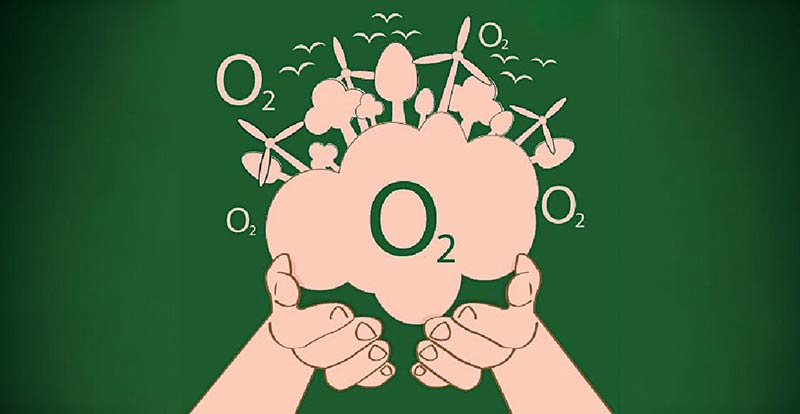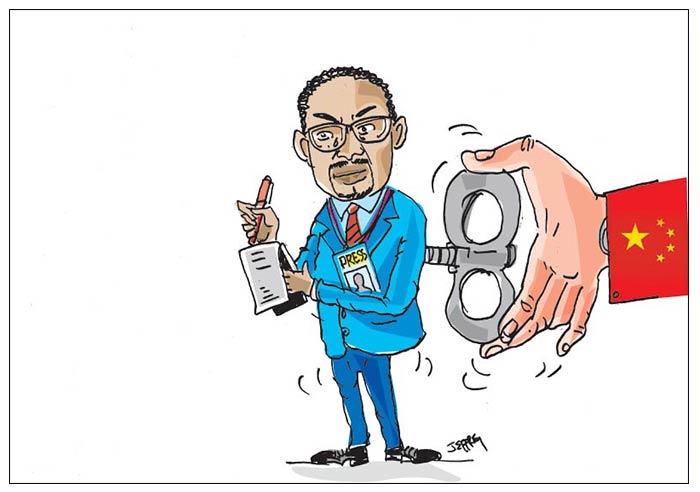Features
Present situation of home gardens in Sri Lanka

by Lionel Weerakoon
A home garden is a piece of land around the dwelling with clear boundaries and it has a functional relationship with its occupants related to economic, biophysical and social aspects. A home garden often consists of a mixture of annual and perennial crops, sometimes including small livestock. On account of the vertical structure with different canopy depths of various plant species, the home gardens are most often referred to as a ‘multi –species, multi-storied cropping system’.
Numerous terms have been used by various authors to describe this system. These include, for example, mixed garden horticulture, mixed garden or home garden, Javanese home garden, compound farm, kitchen garden, household home garden and home garden agro forestry system among these. The structure and management of a home garden varies from place to place, depending upon ecological, socio-economic and cultural factors.
The development and maintenance of a home garden is a collective effort of family members. The cultivation of varied species of plants around the house is usually unplanned. One of the main reasons for growing trees around the house is to provide shade and create a favourable micro-climate for the household, especially during hot weather.
The location where a crop is to be planted in a home garden is based on the characteristics of the plant and its value. Vegetables are usually grown in open areas or, for convenience, at the back and sides of the yard close to the house. Kohila with a high water requirement are planted close to the well. The crops that need shade such as inguru, kaha, kiriala etc are grown under the trees, having a broad canopy.
Tall trees such as teak and mahogany are often planted along the property fence, while fruits or food crops tree are planted within the boundaries. Trees or shrubs grown in the home garden could be grouped into several groups based on their functional value. These categories are 1. Ornamental, 2. Vegetables, including leafy vegetables 3. Medicinal, 4. Spices. 5. Fruits 6. Starchy food crops, such as tuber crops, innala, kiriala, raja ala, kidaram etc. 7. Fodder 8. Timber 9 Firewood. 10. Shade/soil conservation.
The most intensive home garden systems in Sri Lanka are found in Kandy and Matale Districts known as ‘Kandyan forest garden’ and are well known the world over. They are dominated by six species; jackfruit, coconut, mango, arecanut, bread fruit and spices. Very similar forms of home gardens are found in other parts of the wet zone, both in the hill country and lowland areas.
In the low country, home gardens contain various fruit trees, including rambuttan and mangosteen. Depending on the availability of moisture, the crops grown in home gardens in the dry zone are different. Coconut, mango, jack, papaya, orange and guava are amongst the most common species found. Indigenous species including halmilla, sandalwood, teak, tamarind, and margosa form substantial private planting in farmlands.
Estimates claim 26% of all firewood, and 39% of timber needs are produced in home gardens. Home gardens in the Kandyan area form some 4.1 % of the natural tree cover, compared with over 24.9% forest cover in 1980s. Although the population is increasing in Sri Lanka, the total area under trees in Sri Lanka is actually expanding. This is because of the great interest in home gardens. The results of the land use studies for the Forestry Sector Master Plan showed that the area under home gardens has been increasing by about 3% annually since 1980 and 1992.
Sri Lanka’s increasing wood, food and fruit demand could be met or at least strongly supplemented by enhancing the utilization of existing home garden systems and intensifying land use in order to expand the various forms of home gardens. Adoption of better soil management techniques, such as compost use, mulching, soil and water conservation, thereby mitigating moisture stress experienced during dry periods and minimizing soil erosion. Use of wastes, such as green leaves, or decaying leaf, cow dung or cow urine and liquid organic fertilizer are some of the notable practices that can be utilized to improve soil fertility for sustainable crop production in home gardens.
Soil Care and Water Conservation in Home Gardening
Soil care, water conservation and pest control are the most important activities in Home Gardening. This article deals with the first two. Soil loss due to soil erosion leads to depletion of organic matter, reduction of soil microbial population and moisture loss in surface soil.
Home gardens located in the uplands are particularly prone to soil erosion. The home gardens in flat lands have different problems such as water logging. The following are some guidelines of technologies that are used by the home gardeners in different agro-climatic regions in Sri Lanka.
Engineering methods, establishment of bunds
This is used in the dry zone home gardens, where there is low rainfall. Usually at every 20-30 meter intervals bunds and drains are established. The width of a drain and bund would be between 60-80 cm and 50-70 cm respectively. Contour or graded bunds and drains are constructed systematically in order to facilitate collection of runoff water into the drain and retain organic matter within the land so that only the excess water will drain out of the land.
The earth bund will act as a barrier so that it reduces the overland flow rate of water. In case of flat lands, it would be sufficient to have only the drains to let water out of the land. Otherwise it can lead the crops to get damaged due to water logging during the rainy season. The downstream drains should be finally connected to a common drain and let water drains out from a comer of the land. If there are any natural water ways running across the home garden, physical barriers should not be established to block the flow.
The most suitable practice to bunds and drains is growing grasses or bushes with a spreading root system on either side of the bund, especially on the side facing the direction of water flow. Savandara, (Vetiver), Citronella or bushes like Pavatta are most suitable, due to their soil binding effect_ Such grasses or bushes are to be cut time to time and applied to the land as green manure or mulch.
Stone-terracing is practiced in home gardens cultivated ‘with annual or perennial crops for soil conservation. As this is a traditional practice. people are familiar with it. Stone terraces 25-30 cm wide and 50-75 cm high may be constructed across the land by carefully placing the stones of different sizes collected from the home gardens. The distance between two terraces does not usually exceed more than 5m although it may vary depending on the gradient of land.
Stone terracing lock and spill
This method is practiced for soil conservation on sloping lands exceeding 40% gradient before cultivation of annual or perennial crops. The size of the drain should be 60-70 cm wide and 30-40 cm deep. At every 4-5m, soil bunds 30-40 cm wide and about 25cm high should be left across the drain. Organic materials and sand particles in water flowing across the land will settle down at the bottom of the drain as a result of reducing its flow velocity. This settled material in the drain, could be collected and returned to the land. Lock and spill and bund barriers could be constructed by the use of stones available in the home garden.
Biological method, hedgerow cultivation
In the dry zone, hedgerow cultivation is known as Avenue or Alley cropping and in the upcountry and mid country wet zone as SALT (Sloping Agricultural Land Technology) system. Both these methods, in addition to preventing soil erosion, will provide green manure for the home garden as well as fuel wood for domestic use. For this reason, both these practices can be popularized among the home gardeners. Sometimes, the leaves could supply fresh herbage requirement of livestock.
Avenue or alley cropping
This hedgerow method is suitable for flat or slightly sloping home gardens in the dry zone receiving low rainfall. Legume species such as Gliricidia septum should be planted at 50cm distance along the contour or across the slope of the land. Along the hedgerow Gliricidia should be established 4m apart. The space between Gliricidia along the hedge may be grown with Vetiver or Citronella as a measure to minimize soil erosion. In the 4 m wide alleys formed by Gliricidia hedgerows, seasonal crops, tuber legume crop grown between Gliricidia hedge-rows crops, or sometimes fruit crops could be cultivated.
Before planting these crops one to one and a half years-old Gliricidia hedgerow should be cut back or lopped to a convenient height. The toppings and tender branches could be spread in the alley between hedgerows and once the leaves are shed, tender shoot and leaves could be incorporated into the soil as green manure or left on the surface as a mulch.In alley cropping, Gliricidia is commonly used as the hedgerow as it is a perennial, fast growing legumes shrub species, capable of fixing atmospheric nitrogen and tolerant to repeated pruning. Furthermore it has a deep and a spreading root system which can absorb moisture and nutrients from deeper layers of the soil. Leaf and tender shoots should be left after pruning trees are incorporated into the soil as a green manure, which is adequate to sustain growth and yield of seasonal crops.
Generally, pruning of Gliricidia should be done about 1.0-1.5 m above ground but pruning height may be adjusted according to the needs of farmer. Trees could be pruned three times/year during the Maha season (September-December) and twice during the Yala season (April-May). After pruning foliage could be incorporated in to the soil and wood biomass as a source of fuel wood, especially for cooking. This is becoming scarce resource in rural areas. Crops grown in the alleys include: vegetables, tuber crops, pulses, cereals, papaya, banana, and other fruit crops.
SALT method
This method is recommended for home gardens in sloping lands up to 60% gradient in the mid country wet-zone and hill country where double hedgerows with 20-25 cm between two rows are established along the contour, keeping a distance of four to five meters between double hedgerows.
Up to an elevation of 1,000m, Gliricidia is generally used as a hedgerow species but above this, Tithonia and Erythrina can also be planted as hedgerows. To minimize soil erosion, the space between two rows of the double hedge could be filled with stones and any other solid material. Rest of the operations are similar to those of avenue cropping except that trees are cut back about half meter above ground to increase the quantity of leaf biomass.
Features
Defining Oxygen Economy for sustaining life on Earth and growing intergenerational wealth

by Dr. Ranil Senanayake
The Oxygen that is present in the air that we breathe is the birth right of every organism that lives on this planet. It is free for everyone. However, the action of some to take out more than their share, without replacement, has created a condition, where the Global Commons of air is being rapidly degraded,
The most critical component of air is Oxygen. It surrounds us, filling our lungs with every breath we take. It is the invisible gift of nature that we take for granted. But this essential resource—the very foundation of life— is being constricted, because the volume of trees, plants, and photosynthetic organisms that produce oxygen is being lost across the planet. Further, there is no initiative for this generation capacity to be increased as a matter of urgency. exploited at present? Why couldn’t increasing the generation capacity of Oxygen have economic value? Could those who benefit most from using the resources of the Global Commons be required to contribute to its maintenance? This is the idea behind the Oxygen Economy, a bold and transformative concept that seeks to address environmental and social challenges in a way that is fair, sustainable, and forward-thinking beyond GDP value which measures the success of our societies today.
What Is the Oxygen Economy?
The Oxygen Economy is a financial framework, that recognises the value of the global stocks of Oxygen within the commons and records the deposition and consumption through economic activity.
The Oxygen Economy is a principled framework that recognises the stocks, transactions and deposits of Oxygen into the Global commons and assigns value to stocks from privately contracted production units, it stems from a growing recognition that Oxygen is a declining resource with an easy replenishment response.
Oxygen, considered a “free” resource. It is not. Much like oil and coal it is a ‘fossil’ resource that has been a part of the atmosphere for millions of years. It has been slowly declining, but is ‘topped up’ by a service provided by the earth’s ecosystems —particularly trees, plants, and other photosynthetic organisms. These organisms create molecular Oxygen through the process of photosynthesis, supporting life on earth and maintaining the balance of our atmosphere.
At its core, the Oxygen Economy aims to ensure that those who produce contracted and monitored oxygen, be it towns, farmlands, rural or forested lands, are fairly compensated for their efforts. It also holds industries and private-sector entities that benefit from oxygen consumption accountable in maintaining the sustainability of this resource.
What is the urgency to address oxygen as a depleting resource?
Other than the obvious fact of falling global stocks, the need of an Oxygen Economy arises from the urgency of addressing two critical challenges facing humanity: environmental degradation and economic inequality. Placing value on Oxygen production could effectively provide an effective response to both. For decades, efforts to combat climate change have focused primarily on carbon
sequestration. While important, the focus on Carbon sequestration often overlooks other vital ecosystem services, including oxygen production that can contribute towards a growing wealth paradigm. Oxygen, like water and food, is essential for life. However, unlike other resources, it has largely been treated as infinite and freely available, which it is not. In reality, the supply of Oxygen to the atmosphere is decreasing due to deforestation, while the consumption of Oxygen by space exploration, industrial production, war and transport are increasing. Today Oxygen levels have dropped by approximately 2%, raising concerns about the long- term sustainability of this critical resource.
How the Oxygen Economy works
The Oxygen Economy operates on the principles of private property being valued using financial tools such as valuation guarantees, stakeholder contracts and Insurances to monetise contractually produced oxygen as a financial product. This involves three key components:
1. Valuation guarantee:
Assigning an economic value to the oxygen produced by contracted and registered units in identified geographical areas of production is based on the researched, monitored and validated measurements of oxygen generation by trees / plants or photosynthetic organisms such as Cyanobacteria.
2. Deposition guarantee:
Issuance of certificates of completion and deposit of Oxygen into the global Commons Stakeholder Contracts and Compensation: Establishing formal agreements between oxygen consumers (e. g., corporations / Space exploration companies) and contracted oxygen producers (e.g., farmers, Local communities)
3. Policy and regulation: Introducing replicable legal frameworks at a regional scale to enforce accountability and prevent the uncontrolled exploitation of global oxygen resources.
Lessons from Sri Lanka
One country that is already exploring the potential of the Oxygen Economy is in the bioregional area of Sri Lanka. Known for its rich biodiversity and commitment to environmental stewardship, Sri Lanka has implemented initiatives that align with the principles of the Oxygen Economy. In one notable project, women from farming communities established and nurtured trees using contracts that measured and validated payments for photosynthetic biomass on an annually recurring basis for a period of four years. The stakeholders earning substantive income from this project were sensitised to the emerging Oxygen Economy while contributing their obligations to global environmental resilience. Over three years, these participants generated thousands of litres of oxygen, demonstrating that the concept is not only viable but also impactful.
Scaling the Oxygen Economy globally:
While Sri Lanka’s efforts are a promising start, the true potential of the Oxygen Economy
lies in its ability to scale globally. Imagine a world where farmers are compensated for the establishment of trees, where rural and even urban greenery projects could receive funding to expand their impact for this paradigm of business. Such a system would not only help combat climate change but also address economic inequalities of the current GDP paradigm, by together contracting the Oxygen economic asset tool to those who sustain the planet’s life-support systems.
Addressing potential challenges
Like any transformative idea, the Oxygen Economy faces potential challenges. Critics may argue that assigning a monetary value to Oxygen risks commodifying a natural resource that should remain freely accessible. Others may question the feasibility of measuring, validating and regulating oxygen production on a global scale. These concerns can be addressed by emphasising the ethical principles behind the Oxygen Economy. The goal is not to charge people for breathing but to ensure that those who contribute to its sustainability profit from financial contracts for Oxygen production. Additionally, such transparent systems for measuring and validating oxygen production will be crucial for building trust and ensuring fairness towards the vision of accounting for intergenerational wealth beyond the GDP framework that exists.
A vision for the future
The Oxygen Economy represents a paradigm shift in how we think about our relationship with the planet. It challenges us to move beyond the notion of nature as an infinite resource and to recognise the boundaries of our Global Commons. The true value of planet Earth is as an ecosystem that sustains life for all biota. By aligning economic practices with environmental stewardship, the Oxygen Economy offers a path towards a more equitable and sustainable future. It supports the foundations of intergenerational wealth that will be reflected in our contributions to the cycling atmospheric gasses of our Global Commons.
Imagine a world where the air we breathe is not taken for granted but is cherished and protected. Where farmers, communities, and ecosystems are rewarded for their contributions to the planet’s well-being. Where industries operate with a framework of accountability to prioritise the health of our shared environment. This is the vision of the Oxygen Economy—a vision that is within our reach if we act together, with urgency and determination, to lay well informed, solid foundations.
Features
Two sides to a coin; each mourn threat; no threat, no budget blues

 The coin Cassandra starts her Friday Cry with the recent film Rani. Parroting what her friends said on seeing the film, Cass in her Cry just prior to this wrote: “It has been reviewed as outstanding; raved over by many; and already grossed the highest amount in SL cinema history – Rs 100 million from date of release January 30 to February 14. This last: testimony to its popular appeal and acceptance as an outstanding cinema achievement.
The coin Cassandra starts her Friday Cry with the recent film Rani. Parroting what her friends said on seeing the film, Cass in her Cry just prior to this wrote: “It has been reviewed as outstanding; raved over by many; and already grossed the highest amount in SL cinema history – Rs 100 million from date of release January 30 to February 14. This last: testimony to its popular appeal and acceptance as an outstanding cinema achievement.
” Cass admitted she had not seen the film. She now realises her reluctance to jostle in the crowd in one of many cinemas retelling the murder of Richard de Zoysa and traumatic mourning of his mother, Manorani, was because there grew in her a distaste after watching short previews on YouTube of parts of the film. Most centered on is Swarna Mallawarachchi, starring as Manorani, downing alcohol and smoking cigarette after cigarette. Director Asoka Handagama was sensationlising the more dramatic incidents of the tragedy. That was to please the crowd.
We Sri Lankans, or many, have absolutely no tight upper lip. Most funerals of yesteryear and many rural ones still have writhing moaning and groaning and appeals to the dead to smile one more time, say a word, rise up. These loud gasped cries in between sobbing sent Cass wickedly into silent giggles. She thought: what if the dead obliged with even one request. Worst, if he rose up and sat in his coffin. The first to run away would be the callers! People love wallowing in sniffles of sorrow. Audiences much prefer fictionalised retelling of events to documentaries about them. Handagama does style his film as fictionalised history but he definitely is guilty of sensationalism. Cass’ gut feelings have been given words in a criticism on Face Book which was shared with Cass by a nephew.
The sent around message is titled: Misconceived, Misinterpreted, Miscast and a Big Mistake. That tells it all. However there follows an incisive critique of the film Rani by one of Richard’s friends who knew Manorani well and how she was after her son’s death. He signs himself, but Cass will not quote the name here since there is much truth, lies and even hidden agendas in what is posted on social media.
He writes: “Badly acted, badly directed and badly researched … A clear example of character assassination via a deliberate misuse of artistic license! … I want to state my opinion about two people that many of us loved, respected and knew intimately.” He then goes on to point out mistakes and exaggerations: Manorani was never even bordering on alcoholism and hardly ever smoked. And when she did, socially or to dim her sorrow, she did it elegantly. A Man Friday commented: they should have taught Swarna how to hold a cigarette and smoke it as it should be smoked. Hence my contention, every coin, even a box office success, has two sides to it, two diverse criticisms and in-betweens. Decision: Cass will not queue for a cinema ticket.
Each morn
Phoned a US living friend who was recovering from a harsh winter’s gift to her – severe flu. She said the flu was leaving her but depression and distraught-ness about hers and the US’s future were threatening to drown her in emotional turmoil much worse than the worst cough ‘n cold.
I knew the reason – Trump’s trumpets of new opinions, threats, enactments et al. She dreaded getting up each morning wondering what new calamity was to descend on the American people and by influence, spreading to the world. Her son has forbidden TV news watching and reading the newspapers which she says are so opposed to media treatment of the Prez.
I could very well sympathise with her. We in Sri Lanka suffered bouts of such threatened discomfort, nay calamitous warnings and sheer dread. My remembering mind went to Shakespeare in his tragic play Macbeth. Macduff’s description of Scotland under the reign of Macbeth to Malcolm, son and heir of murdered Duncan now sheltered in England, goes thus: “Each new morn/ New widows howl, new orphans cry/ new sorrows strike heaven on the face that it resounds.”
Cass does not know about you but dread lurked in her heart and mind when the JVP 1989 insurrection took place – for her teenage son. The LTTE and suicide bombs caused utter destruction of life, limb and infrastructure. Families who had travelled together now travelled to schools and workplaces separately since no bus or train was safe. Nor were the privately owned cars. Then came two tyrant Presidents with sudden deaths of prominent persons and media personnel like Richard and Lasantha and many others.
Blatant robbing of our money had us gasping helplessly. Riff raff rose in power and lorded, one such tying a man to a stake for not attending a meeting. Then rode to power on popular vote another brother in the newly created powerful dynasty. Word of mouth minus stroke of pen had orders given out to be promptly executed. White vans which plied the streets were reduced but worse happened.
One order and the rice fields had no grain, fruits dried on trees, forex earning luscious two leaves and a bud withered and could not be plucked. Bankruptcy resulted. But we had a ‘shipless’ harbour which had to be mortgaged for a song to the Chinese; a plane-less airport sounding death to elephants and peafowl; and a gaudy tower to gaze on or commit suicide from. A gathering of people on Galle Face Green righted things.
Then came into power a party that had two men and a woman in Parliament which yielded a true Sri Lankan with country first and last in mind, as President. Followed a sharp victory for the coalition of parties led by the hopefully reformed JVP so that three seats became almost two thirds of all seats in Parliament and a woman as Prime Minister. She had no connection to previous Heads unlike a former woman PM and Prez. The first woman PM rode to power weeping for her murdered husband; the younger very promising Prez because she was daughter of two Heads of Sri Lanka. But there was, even under their reign, mutterings and difficulties.
Truth be told, we sleep better at night and wake up with no dread in our innards. We rise to shine (if possible, in the heat of Feb) knowing people are working and corruption is not wrought by those in power. Thank goodness and our sensible voters for this peace we savour.
2025 Budget
Cass’ title has the phrase ‘no budget blues’. Looks like it is generally correct. Of course, the Opposition is criticising Finance Minister AKD’s presented budget. Cass is no economist, not by a long chalk, but she was glad to see that expenditure on health and education were substantial. We had a time when the armed forces were allocated more than education and health combined. Much has been looked into: including pregnant women and the Jaffna library among a host of mentioned amenities. We have no need to pessimistically await a Gazette Extraordinary stating negative segments of the future year’s financial plan. Thanks be!
Gaza and Ukraine are worse in position and the world is awry. But Sri Lanka is in a phase where Kuveni’s curse is stilled and people are considering themselves Sri Lankans, uniting to re-make Sri Lanka Clean as it was before selfish corrupt politicians took over.
Features
As Africa toes Chinese line …

Mitchell Gallagher
Every year, China’s minister of foreign affairs embarks on what has now become a customary odyssey across Africa. The tradition began in the late 1980s and sees Beijing’s top diplomat visit several African nations to reaffirm ties. The most recent visit, by Foreign Minister Wang Yi, took place in mid-January 2025 and included stops in Namibia, the Republic of the Congo, Chad and Nigeria.
For over two decades, China’s burgeoning influence in Africa was symbolised by grand displays of infrastructural might. From Nairobi’s gleaming towers to expansive ports dotting the continent’s shorelines, China’s investments on the continent have surged, reaching over $700 billion by 2023 under the Belt and Road Initiative, China’s massive global infrastructure development strategy.
But in recent years, Beijing has sought to expand beyond roads and skyscrapers and has made a play for the hearts and minds of African people. With a deft mix of persuasion, power and money, Beijing has turned to African media as a potential conduit for its geopolitical ambitions. Partnering with local outlets and journalist-training initiatives, China has expanded China’s media footprint in Africa. Its purpose? To change perceptions and anchor the idea of Beijing as a provider of resources and assistance and a model for development and governance. The ploy appears to be paying dividends, with evidence of sections of the media giving favourable coverage to China.
But as someone researching the reach of China’s influence overseas, I am beginning to see a nascent backlash against pro-Beijing reporting in countries across the continent. China’s approach to Africa rests mainly on its use of “soft power,” manifested through things like the media and cultural programmes. Beijing presents this as “win-win cooperation”—a quintessential Chinese diplomatic phrase mixing collaboration with cultural diplomacy. Key to China’s media approach in Africa are two institutions: The China Global Television Network (CGTN) Africa and Xinhua News Agency.
CGTN Africa, which was set up in 2012, offers a Chinese perspective on African news. The network produces content in multiple languages, including English, French and Swahili, and its coverage routinely portrays Beijing as a constructive partner, reporting on infrastructure projects, trade agreements and cultural initiatives. Moreover, Xinhua News Agency, China’s state news agency, now boasts 37 bureaus on the continent. By contrast, Western media presence in Africa remains comparatively limited.
The BBC, long embedded due to the United Kingdom’s colonial legacy, still maintains a large footprint among foreign outlets, but its influence is largely historical rather than expanding. And as Western media influence in Africa has plateaued, China’s state-backed media has grown exponentially. This expansion is especially evident in the digital domain. On Facebook, for example, CGTN Africa commands a staggering 4.5 million followers, vastly outpacing CNN Africa, which has 1.2 million—a stark indicator of China’s growing soft power reach. China’s zero-tariff trade policy with 33 African countries showcases how it uses economic policies to mould perceptions.
And state-backed media outlets like CGTN Africa and Xinhua are central to highlighting such projects and pushing an image of China as a benevolent partner. Stories of an “all-weather” or steadfast China-Africa partnership are broadcast widely and the coverage frequently depicts the grand nature of Chinese infrastructure projects. Amid this glowing coverage, the labour disputes, environmental devastation or debt traps associated with some Chinese-built infrastructure are less likely to make headlines. Questions of media veracity notwithstanding, China’s strategy is bearing fruit.
A Gallup poll from April 2024 showed China’s approval ratings climbing in Africa as US ratings dipped. Afrobarometer, a pan-African research organisation, further reports that public opinion of China in many African countries is positively glowing, an apparent validation of China’s discourse engineering. Further, studies have shown that pro-Beijing media influences perceptions. A 2023 survey of Zimbabweans found that those who were exposed to Chinese media were more likely to have a positive view of Beijing’s economic activities in the country. The effectiveness of China’s media strategy becomes especially apparent in the integration of local media.
Through content-sharing agreements, African outlets have disseminated Beijing’s editorial line and stories from Chinese state media, often without the due diligence of journalistic scepticism. Meanwhile, StarTimes, a Chinese media company, delivers a steady stream of curated depictions of translated Chinese movies, TV shows and documentaries across 30 countries in Africa. But China is not merely pushing its viewpoint through African channels. It’s also taking a lead role in training African journalists, thousands of whom have been lured by all-expenses-paid trips to China under the guise of “professional development.” On such junkets, they receive training that critics say obscures the distinction between skill-building and propaganda, presenting them with perspectives conforming to Beijing’s line.
Ethiopia exemplifies how China’s infrastructure investments and media influence have fostered a largely favourable perception of Beijing. State media outlets, often staffed by journalists trained in Chinese-run programmes, consistently frame China’s role as one of selfless partnership. Coverage of projects like the Addis AbabaDjibouti railway line highlights the benefits, while omitting reports on the substandard labour conditions tied to such projects—an approach reflective of Ethiopia’s media landscape, where state-run outlets prioritise economic development narratives and rely heavily on Xinhua as a primary news source. In Angola, Chinese oil companies extract considerable resources and channel billions into infrastructure projects.
The local media, again regularly staffed by journalists who have accepted invitations to visit China, often portray Sino-Angolan relations in glowing terms. Allegations of corruption, the displacement of local communities and environmental degradation are relegated to side notes in the name of common development. Despite all of the Chinese influence, media perspectives in Africa are far from uniformly pro-Beijing. In Kenya, voices of dissent are beginning to rise and media professionals immune to Beijing’s allure are probing the true costs of Chinese financial undertakings. In South Africa, media watchdogs are sounding alarms, pointing to a gradual attrition of press freedoms that come packaged with promises of growth and prosperity.
In Ghana, anxiety about Chinese media influence permeates more than the journalism sector, as officials have raised concerns about the implications of Chinese media cooperation agreements. Wariness in Ghana became especially apparent when local journalists started reporting that Chinese-produced content was being prioritised over domestic stories in state media.
Beneath the surface of China’s well publicised projects and media offerings, and the African countries or organisations that embrace Beijing’s line, a significant countervailing force exists that challenges uncritical representations and pursues rigorous journalism. Yet as CGTN Africa and Xinhua become entrenched in African media ecosystems, a pertinent question comes to the forefront: Will Africa’s journalists and press be able to uphold their impartiality and retain intellectual independence? As China continues to make strategic inroads in Africa, it’s a fair question.
(The writer is a PhD candidate of political science at Wayne State University, US. This article was published on www.theconversation.com)
-

 Sports6 days ago
Sports6 days agoRemarkable turnaround for Sri Lanka’s ODI team
-

 Features6 days ago
Features6 days agoScammed and Stranded: The Dark Side of Sri Lanka’s Migration Industry
-

 Business6 days ago
Business6 days agoUN Global Compact Network Sri Lanka: Empowering Businesses to Lead Sustainability in 2025 & Beyond
-

 News7 days ago
News7 days agoSpeaker agrees to probe allegations of ‘unethical funding’ by USAID
-

 Features5 days ago
Features5 days agoDon’t betray baiyas who voted you into power for lack of better alternative: a helpful warning to NPP – II
-

 Features5 days ago
Features5 days agoTwo films and comments
-

 News3 days ago
News3 days agoCommercial High Court orders AASSL to pay Rs 176 mn for unilateral termination of contract
-

 News6 days ago
News6 days agoInnovation Island Summit 2025, Colombo, Sri Lanka











